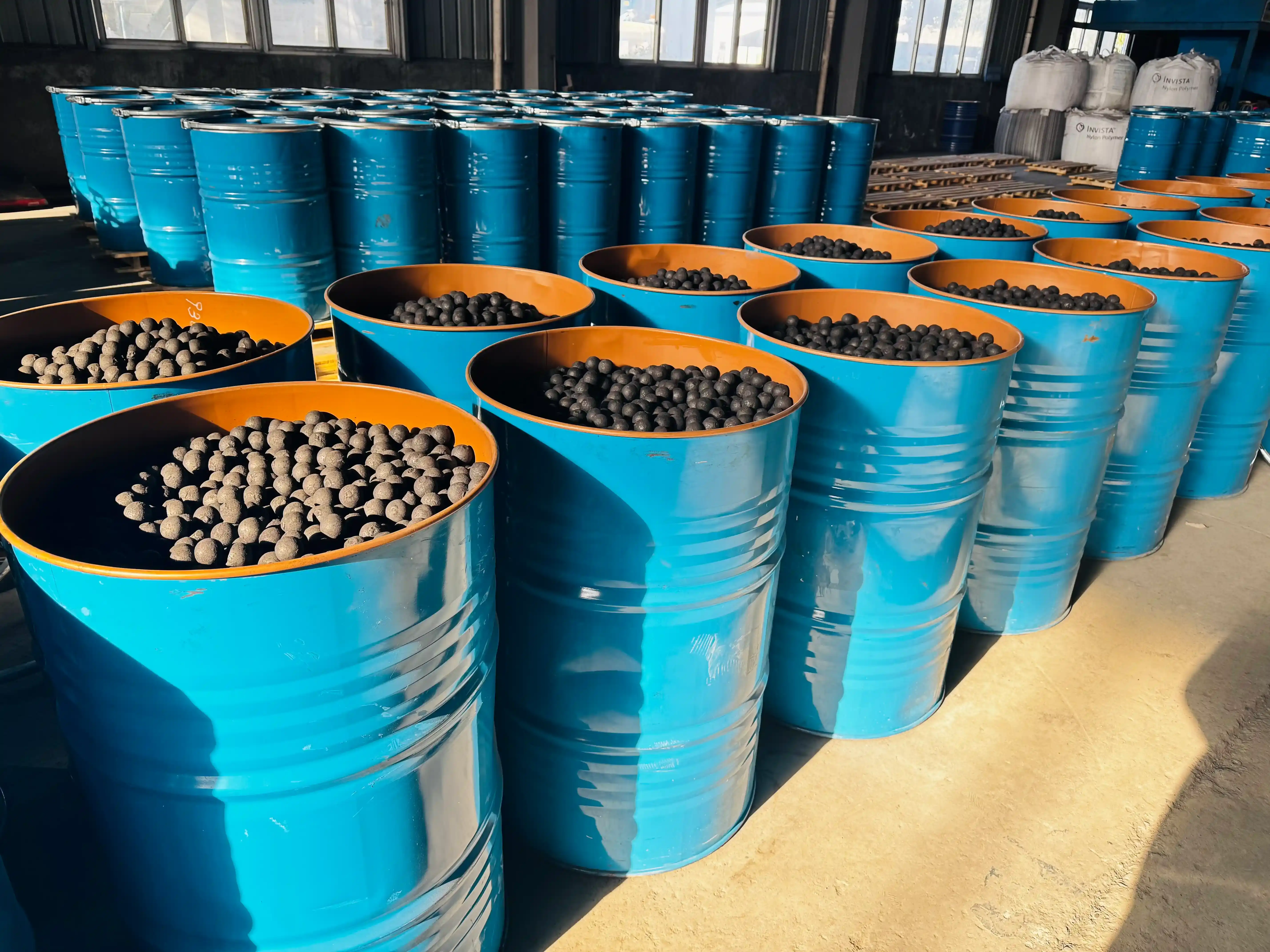Why Grinding Media Steel Balls Are Crucial in Milling
Grinding media steel balls play a pivotal role in the milling process, serving as the primary tools for reducing particle size and achieving desired material properties. Their importance stems from several key factors:
Superior Hardness and Durability
Steel balls exhibit exceptional hardness, which allows them to withstand the intense forces involved in grinding operations. This durability translates to longer operational lifespans, reducing the frequency of media replacement and associated downtime. The robustness of steel balls ensures consistent performance over extended periods, contributing to overall process efficiency.
Optimal Energy Transfer
The density and weight of steel balls facilitate efficient energy transfer during the grinding process. As the mill rotates, these balls cascade and impact the material being ground, effectively breaking it down. The mass of the steel balls allows for greater kinetic energy, resulting in more effective particle size reduction with each collision.
Versatility Across Industries
Grinding media steel balls find applications in a wide range of industries, including mining, cement production, and ceramics manufacturing. Their versatility stems from their ability to handle various materials with different hardness levels and grinding requirements. This adaptability makes steel balls a cost-effective solution for diverse grinding needs.
Consistent Particle Size Distribution
The uniform shape and size of steel balls contribute to achieving a more consistent particle size distribution in the final product. This uniformity is crucial in industries where precise material specifications are required, such as in the production of high-quality ceramics or specialized chemical compounds.
Maximizing Grinding Efficiency with Steel Balls
To fully harness the potential of grinding media steel balls, it's essential to optimize their use within the grinding process. Here are key strategies to enhance efficiency:
Proper Ball Size Selection
Choosing the right size of steel balls is critical for maximizing grinding efficiency. Larger balls are typically used for coarse grinding, while smaller balls are more effective for fine grinding. A well-designed ball charge with a mix of sizes can optimize the grinding process across different stages, ensuring efficient particle size reduction throughout the operation.
Optimizing Ball Charge Volume
The volume of steel balls in the mill, known as the ball charge, significantly impacts grinding efficiency. An optimal charge volume ensures proper cascading action and prevents overloading or underutilization of the grinding media. Regular monitoring and adjustment of the ball charge can lead to substantial improvements in grinding performance.
Material-Specific Customization
Tailoring the grinding media selection to the specific material being processed can greatly enhance efficiency. Factors such as material hardness, desired fineness, and throughput requirements should guide the choice of steel ball composition and size distribution. This customized approach ensures optimal grinding performance for each unique application.
Regular Maintenance and Replacement
While steel balls are known for their durability, they do wear over time. Implementing a regular maintenance schedule to inspect and replace worn balls is crucial for maintaining grinding efficiency. Timely replacement prevents the use of undersized or misshapen balls that can reduce grinding effectiveness and potentially damage mill linings.
Innovations in Grinding Media Steel Ball Production
The field of grinding media production is continually evolving, with new innovations aimed at further enhancing the efficiency and performance of steel balls. These advancements are shaping the future of grinding operations across industries:
Advanced Alloy Formulations
Metallurgical research has led to the development of specialized alloy formulations for grinding media steel balls. These advanced materials offer improved wear resistance, hardness, and impact strength compared to traditional steel compositions. By utilizing these high-performance alloys, industries can achieve longer media lifespans and enhanced grinding efficiency.
Surface Treatment Technologies
Innovative surface treatment processes are being applied to steel balls to enhance their performance characteristics. Techniques such as heat treatment, nitriding, and surface hardening can significantly improve the wear resistance and impact strength of grinding media. These treatments extend the operational life of the balls and maintain their grinding efficiency over longer periods.
Precision Manufacturing Techniques
Advancements in manufacturing technologies have enabled the production of steel balls with tighter tolerances and more uniform shapes. Computer-controlled machining and automated quality control processes ensure consistent ball sizes and sphericity. This precision contributes to more predictable grinding performance and improved particle size distribution in the final product.
Eco-Friendly Production Methods
As sustainability becomes increasingly important across industries, grinding media manufacturers are exploring more environmentally friendly production methods. These include the use of recycled materials, energy-efficient manufacturing processes, and the development of biodegradable coatings for steel balls. These innovations aim to reduce the environmental impact of grinding operations while maintaining high efficiency levels.
In conclusion, grinding media steel balls play a crucial role in enhancing the efficiency of industrial grinding processes. Their superior hardness, durability, and versatility make them indispensable in various industries. By understanding the factors that influence their performance and staying abreast of the latest innovations in steel ball production, businesses can optimize their grinding operations for maximum efficiency and productivity.
For high-quality grinding media steel balls that can revolutionize your grinding processes, look no further than NINGHU. With over three decades of experience in wear-resistant materials production, we offer a wide range of casting grinding balls tailored to your specific industry needs. To learn more about our products and how they can enhance your operational efficiency, please don't hesitate to contact us at sales@da-yang.com or sunny@da-yang.com. Let NINGHU be your partner in achieving grinding excellence!
References
- Johnson, R. T., & Maddux, G. A. (2018). Advances in Grinding Media Technology for Enhanced Mill Performance.
- Smith, L. K., & Brown, P. D. (2019). Optimizing Ball Mill Efficiency through Precision Grinding Media Selection.
- Zhang, Y., & Li, X. (2020). Comparative Analysis of Grinding Media Materials: Impact on Industrial Milling Processes.
- Anderson, M. E., & Wilson, K. R. (2021). Eco-Friendly Innovations in Grinding Media Production: A Sustainable Approach.
- Patel, S., & Nguyen, T. H. (2022). The Role of Surface-Treated Steel Balls in Improving Grinding Efficiency.
- Roberts, C. L., & Garcia, A. M. (2023). Next-Generation Alloys for High-Performance Grinding Media: Industry Perspectives.









